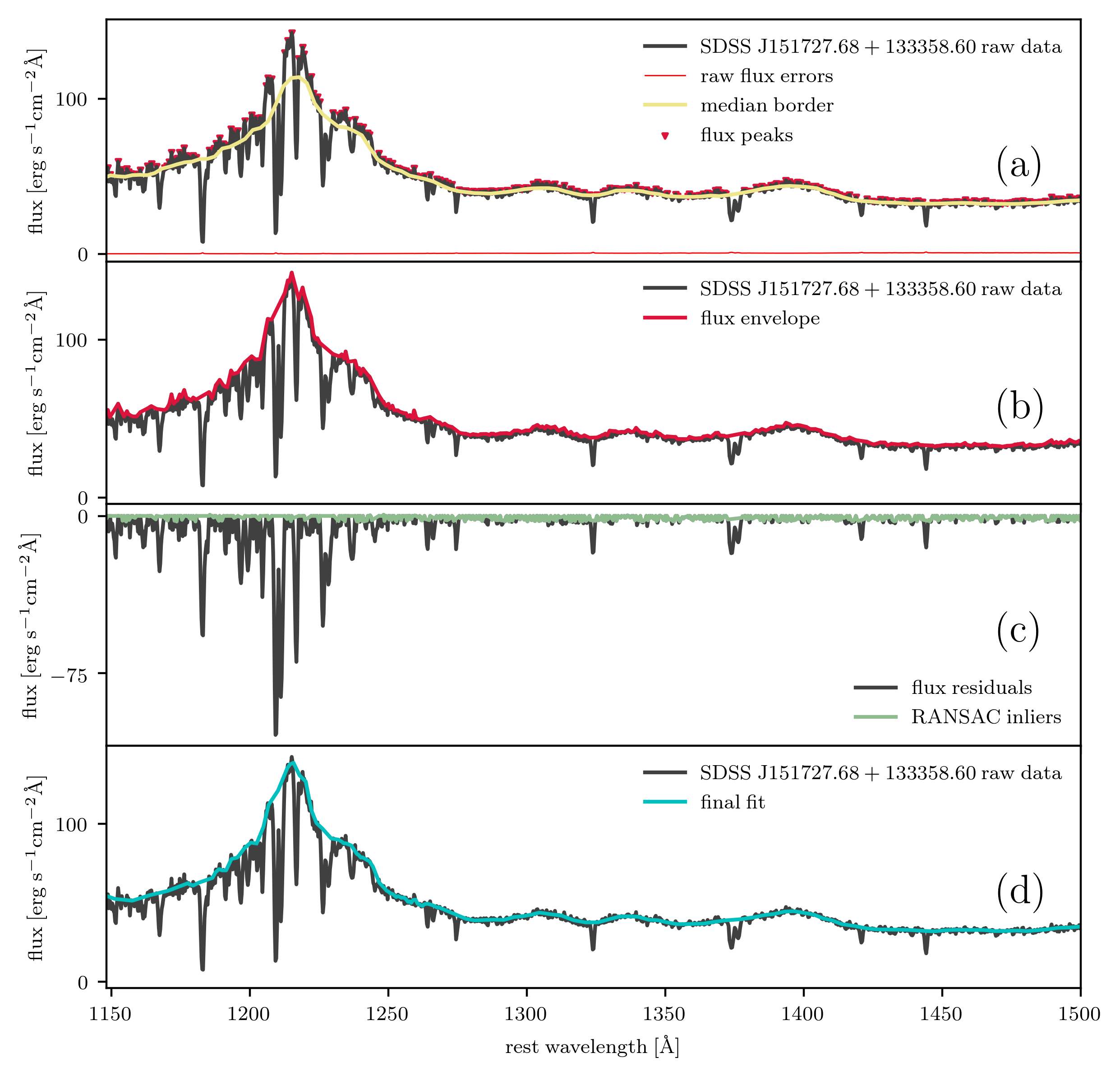Reionization history constraints from neural network based predictions of high-redshift quasar continua
Observations of the early Universe suggest that reionization was complete by $z\sim6$, however, the exact history of this process is still unknown. One method for measuring the evolution of the neutral fraction throughout this epoch is via observing the Ly$\alpha$ damping wings of high-redshift quasars. In order to constrain the neutral fraction from quasar observations, one needs an accurate model of the quasar spectrum around Ly$\alpha$, after the spectrum has been processed by its host galaxy but before it is altered by absorption and damping in the intervening IGM. In this paper, we present a novel machine learning approach, using artificial neural networks, to reconstruct quasar continua around Ly$\alpha$. Our QSANNdRA algorithm improves the error in this reconstruction compared to the state-of-the-art PCA-based model in the literature by 14.2% on average, and provides an improvement of 6.1% on average when compared to an extension thereof. In comparison with the extended PCA model, QSANNdRA further achieves an improvement of 22.1% and 16.8% when evaluated on low-redshift quasars most similar to the two high-redshift quasars under consideration, ULAS J1120+0641 at $z=7.0851$ and ULAS J1342+0928 at $z=7.5413$, respectively. Using our more accurate reconstructions of these two $z>7$ quasars, we estimate the neutral fraction of the IGM using a homogeneous reionization model and find $\bar{x}_\mathrm{HI} = 0.25^{+0.05}_{-0.05}$ at $z=7.0851$ and $\bar{x}_\mathrm{HI} = 0.60^{+0.11}_{-0.11}$ at $z=7.5413$. Our results are consistent with the literature and favour a rapid end to reionization.
PDF Abstract